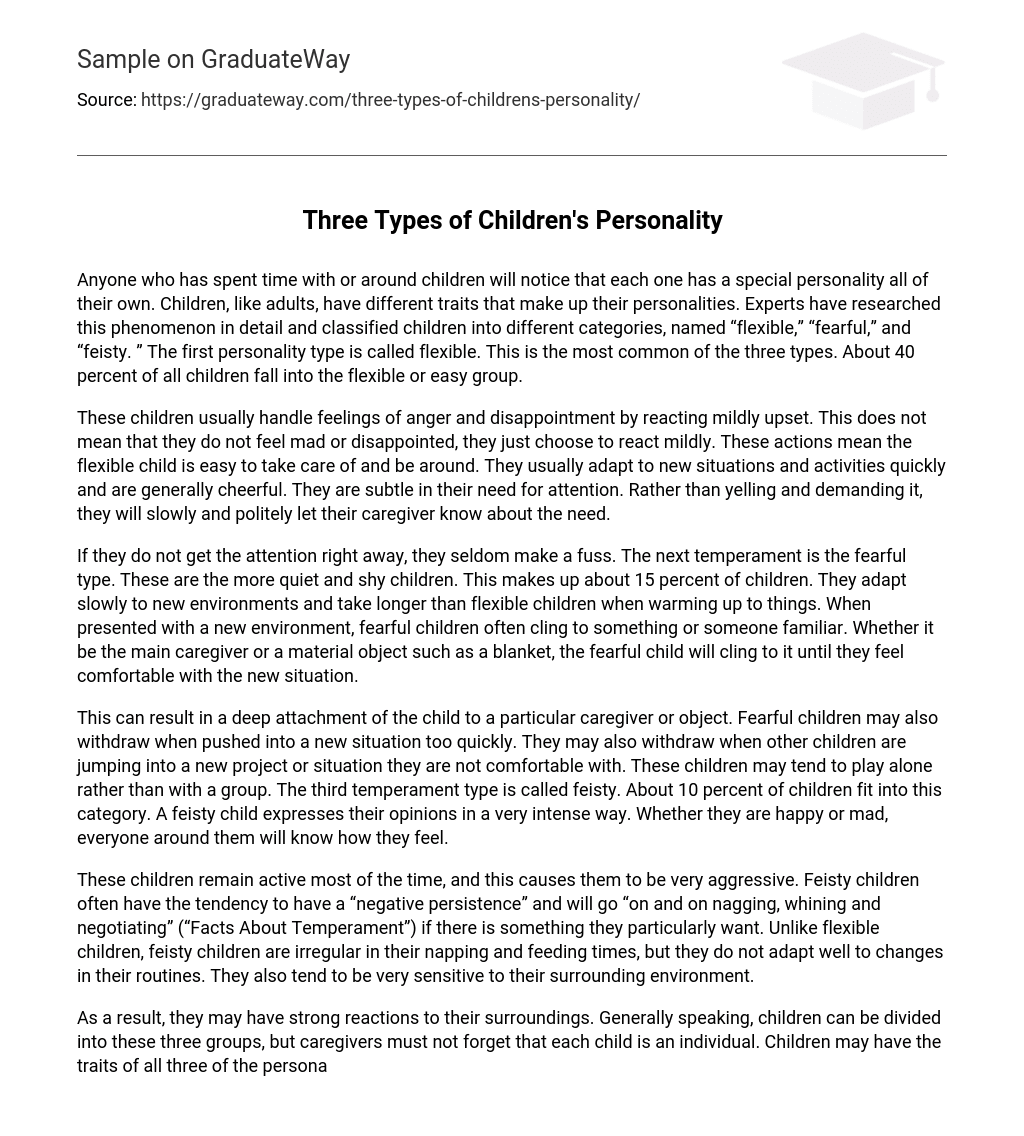Anyone who has spent time with or around children will notice that each one has a special personality all of their own. Children, like adults, have different traits that make up their personalities. Experts have researched this phenomenon in detail and classified children into different categories, named “flexible,” “fearful,” and “feisty. ” The first personality type is called flexible. This is the most common of the three types. About 40 percent of all children fall into the flexible or easy group.
These children usually handle feelings of anger and disappointment by reacting mildly upset. This does not mean that they do not feel mad or disappointed, they just choose to react mildly. These actions mean the flexible child is easy to take care of and be around. They usually adapt to new situations and activities quickly and are generally cheerful. They are subtle in their need for attention. Rather than yelling and demanding it, they will slowly and politely let their caregiver know about the need.
If they do not get the attention right away, they seldom make a fuss. The next temperament is the fearful type. These are the more quiet and shy children. This makes up about 15 percent of children. They adapt slowly to new environments and take longer than flexible children when warming up to things. When presented with a new environment, fearful children often cling to something or someone familiar. Whether it be the main caregiver or a material object such as a blanket, the fearful child will cling to it until they feel comfortable with the new situation.
This can result in a deep attachment of the child to a particular caregiver or object. Fearful children may also withdraw when pushed into a new situation too quickly. They may also withdraw when other children are jumping into a new project or situation they are not comfortable with. These children may tend to play alone rather than with a group. The third temperament type is called feisty. About 10 percent of children fit into this category. A feisty child expresses their opinions in a very intense way. Whether they are happy or mad, everyone around them will know how they feel.
These children remain active most of the time, and this causes them to be very aggressive. Feisty children often have the tendency to have a “negative persistence” and will go “on and on nagging, whining and negotiating” (“Facts About Temperament”) if there is something they particularly want. Unlike flexible children, feisty children are irregular in their napping and feeding times, but they do not adapt well to changes in their routines. They also tend to be very sensitive to their surrounding environment.
As a result, they may have strong reactions to their surroundings. Generally speaking, children can be divided into these three groups, but caregivers must not forget that each child is an individual. Children may have the traits of all three of the personality groups, but they are categorized into the one they are most like. Whatever their temperament, children need to be treated according to their individual needs. When these needs are met appropriately the child will be happier, and those around the child will feel better also.





